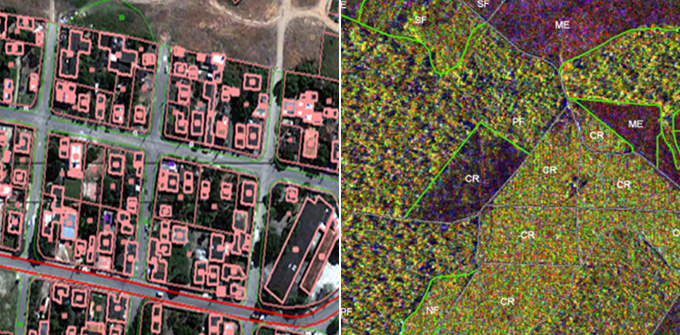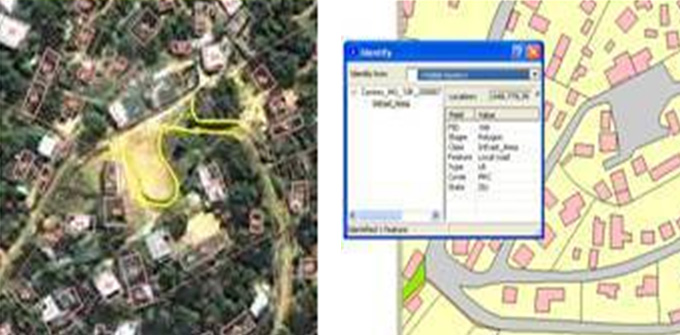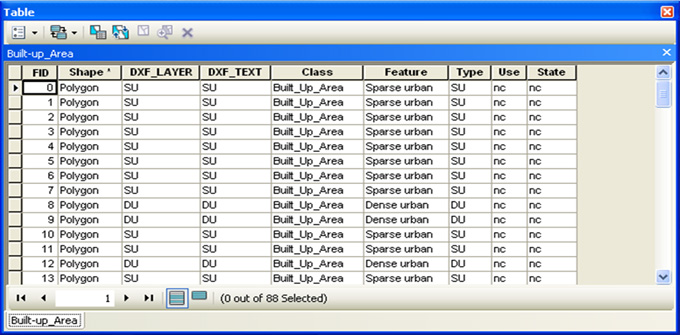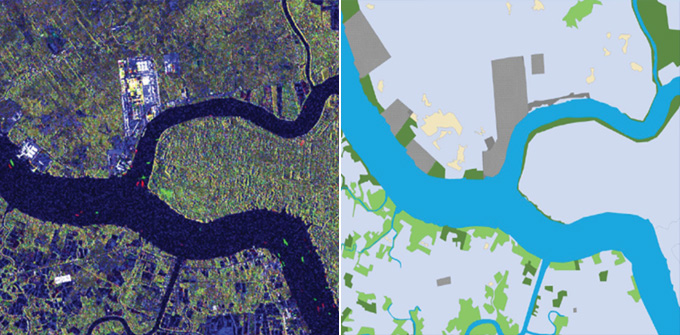







GIS Services / Remote Sensing
AAMGST has delivered 1.6 million hectares of 2D cartography to Europe, US, and Australian clients. Our dedicated team has executed large scale (1:1000), medium scale (1:2000), and small scale (1:5000, 1:10000, 1:30000) mapping for different geospatial applications.
We provide comprehensive spatial engineering solutions with experienced GIS engineers. We specialize in understanding our client’s requirements for providing better solutions on time. AAMGST has been providing services for land use planning, airport service area analysis, site selection, and airspace obstruction analysis.
One of the key advantages of using GIS services and remote sensing technologies is their ability to provide accurate and up-to-date information about Earth's surface. By collecting data from various sources and integrating them into a GIS platform, researchers and professionals can create detailed maps and visualizations that help them better understand and analyze different phenomena. For example, urban planners can use GIS services to identify areas at risk of flooding, while environmental scientists can monitor land use changes over time using remote sensing data. This information is crucial for making informed decisions and implementing effective strategies to address various challenges.
Furthermore, GIS services and remote sensing technologies have the potential to revolutionize the way we approach environmental sustainability and resource management. By using satellite imagery and aerial drones, researchers can monitor deforestation, track wildlife populations, and assess the impact of human activities on the environment. This information is invaluable for policymakers and conservationists, as it allows them to develop evidence-based strategies to protect our natural resources and biodiversity. In this sense, GIS services and remote sensing technologies play a crucial role in promoting sustainable development and ensuring the well-being of future generations.
Geological Maps
AAMGST personnel have expertise in high-quality geological map production and addition of attribute data from hard copy topographic maps. We have the capability in GIS, spatial data analysis, and cartography for geology, land use, land cover, urban planning, forestry for various scales.
Choropleth Map
A choropleth map is a thematic map that uses color, shades, or patterns to represent a geographic area based on a statistical value. The term "choropleth" comes from the Greek words "choro" meaning area and "pleth" meaning fullness, referring to the proportional fill of the area. Choropleth maps are widely used in geography, sociology, economics, and political science to visualize data that can be associated with administrative boundaries or other pre-defined areas. They are particularly useful for comparing regions and identifying spatial patterns in the data. However, it's important to note that choropleth maps can sometimes be misleading due to the issue of spatial heterogeneity within the defined areas. For example, a county with a high population density might have pockets of lower density, or the distribution of the population within the county might be uneven. In such cases, alternative mapping techniques, such as dot density maps or isopleth maps, might be more appropriate.
Cartogram Maps
A cartogram is a map-like diagram that distorts the size or shape of geographic areas to represent data values. The purpose of a cartogram is to visualize relationships between spatial entities and some quantitative data, such as population, Gross Domestic Product (GDP), or any other variable that can be mapped to a spatial unit. Cartograms are useful for communicating information about spatial distributions of data in a way that is not possible with traditional maps. They can help to highlight the importance of certain areas that might be overlooked on a standard map due to their small size or remote location. However, cartograms can be difficult to interpret in terms of traditional geographic relationships, such as distance and direction. They also do not provide information about the actual size or shape of the geographic areas, which can be important for certain types of analysis. Cartograms are often used in journalism, policy analysis, and research to communicate complex spatial data in a visually compelling way. They can be created using specialized software or by manually adjusting the size and shape of geographic areas in a geographic information system (GIS).
Dot Density Maps
A dot density map is a thematic map that uses dots of uniform size to represent a quantity or a density of a phenomenon. The dots are placed over a geographic area, and their density or aggregation is proportional to the value of the phenomenon being mapped. This technique is often used to represent data that can be associated with a specific location, such as population, crime incidents, or disease cases. However, dot density maps can be misleading if the dots are not distributed evenly within the geographic areas. For example, if the dots are concentrated in one part of a census block, this might not accurately reflect the distribution of the phenomenon across the entire block. In addition, dot density maps can be difficult to interpret if the density of dots becomes too high, as it can be hard to distinguish individual dots. In such cases, other mapping techniques, such as proportional symbol maps or graduated symbols, might be more appropriate. Dot density maps are often used in urban planning, public health, and social science research to visualize the distribution of population, crime, and other phenomena across geographic areas. They can be created using specialized software or by manually placing dots on a map.
Flow Maps
A flow map is a type of diagram that is used to visualize the flow of data between different locations or origins and destinations. Flow maps are often used in geography, economics, and social science to understand and analyze the movement of people, goods, information, or resources over space and time. Flow maps are useful for understanding the spatial patterns and dynamics of movement and exchange. They can help to identify key trade partners, understand the impact of trade on different regions, and identify potential areas for economic development or trade diversification. However, flow maps can be difficult to interpret if there are too many flows or if the flows are too complex. They also require a significant amount of data to be effective, and the accuracy of the map depends on the quality and completeness of the underlying data. Flow maps can be created using a variety of software tools, including ArcGIS, QGIS, and Tableau. They can be displayed on a computer screen, printed on paper, or even created as physical models using 3D printing technology.
Graduated Symbol Maps
Graduated symbol maps, also known as proportional symbol maps, are a type of thematic map that uses symbols of varying sizes to represent the magnitude or quantity of a variable at specific geographic locations. These symbols are typically circles, squares, or other shapes, and their size corresponds to the value of the variable being mapped. Graduated symbol maps are commonly used in demography, economics, environmental science, and other fields to visualize and analyze spatial patterns and variations in data. They provide a clear and intuitive way to represent quantitative information at specific geographic locations, allowing viewers to identify spatial trends and disparities in the data.
Isopleth or Contour Maps
Isopleth maps, also known as contour maps or isoline maps, are a type of thematic map that represents continuous spatial phenomena by connecting points of equal value with contour lines. These lines join areas of the map that have the same value for the variable being mapped, such as elevation, temperature, rainfall, or pollution levels. Isopleth maps are widely used in geography, meteorology, geology, environmental science, and other fields to visualize and analyze continuous spatial phenomena. They provide insights into spatial patterns, gradients, and variations in the data, allowing viewers to interpret and understand the spatial characteristics of the variable being mapped.
Network Maps
A network map is a type of diagram that is used to visualize the structure and connections within a network. Networks can be physical, such as road networks or electrical grids, or they can be social, such as friendship networks or business partnerships. Network maps are used to understand how nodes (individual elements within the network) are connected to each other, and how the structure of the network affects the flow of information, resources, or people through the network. However, network maps can be difficult to interpret if the network is too large or too complex. They also require a significant amount of data to be effective, and the accuracy of the map depends on the quality and completeness of the underlying data. In addition, network maps can be misleading if the relationships between nodes are not represented accurately or if the map does not include all of the relevant relationships. It is important to use a consistent and intuitive method for representing the relationships between nodes to avoid misunderstandings. Network maps can be created using a variety of software tools, including ArcGIS, QGIS, and specialized network analysis software such as Gephi or Cytoscape. They can be displayed on a computer screen, printed on paper, or even created as physical models using 3D printing technology.
Thermal Maps or Heat Maps
Thermal maps, also known as heat maps, are graphical representations of data where values are depicted using colors to indicate intensity or concentration levels across a geographic area. These maps are commonly used to visualize and analyze data patterns such as population density, temperature variations, or the distribution of a particular phenomenon. Thermal maps or heat maps are beneficial for identifying trends, outliers, and spatial patterns within datasets. They provide a quick and intuitive way to comprehend data distributions across a geographic area. However, it's crucial to note that heat maps are visual aids and can sometimes oversimplify complex data relationships. When using thermal maps, it's important to consider factors such as color choices, scale ranges, and the underlying data quality to ensure accurate and meaningful representations. Thermal maps are widely used in fields like business analytics, urban planning, epidemiology, and environmental studies to analyze and communicate spatial data effectively.
Land Cover Classification
Land cover classification is the process of categorizing and mapping the different types of land cover or land use within a geographic area. It involves identifying and labeling the various surface cover types, such as forests, urban areas, water bodies, agricultural fields, and barren land, among others. Land cover classification is an essential task in remote sensing, GIS (Geographic Information Systems), and environmental monitoring, providing valuable information for resource management, land use planning, biodiversity conservation, and climate change studies. Land cover classification plays a crucial role in various applications, including natural resource management, environmental monitoring, land use planning, disaster management, habitat mapping, and climate change analysis. It provides valuable insights into the spatial distribution and dynamics of land cover types, helping stakeholders make informed decisions and policies for sustainable development and conservation efforts.
In conclusion, GIS services and remote sensing technologies have become indispensable tools for a wide range of applications, from urban planning and environmental management to disaster response and natural resource monitoring. By harnessing the power of geospatial data and remote sensing technologies, researchers and professionals can gain valuable insights into Earth's surface and make informed decisions to address various challenges. As technology continues to advance, the potential for GIS services and remote sensing to improve our understanding of the world around us and drive positive change is limitless.